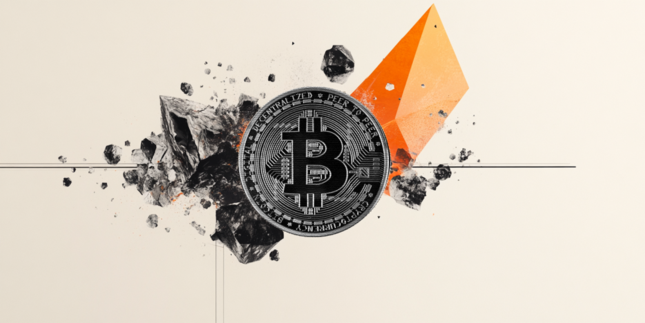The cryptocurrency world is buzzing with innovation, investment, and opportunities that continue to reshape how we think about money. At the heart of this revolution is Tether (USDT), a stablecoin that has become a go-to choice for traders, businesses, and everyday users alike. As talks of potentially delisting USDT in the European Union (EU) circulate, it’s worth taking a moment to explore what’s at stake. Spoiler alert: it’s a lot.
Why USDT matters
Let’s start with why USDT is such a big deal. It’s pegged to the US dollar, which means it doesn’t swing wildly in value like Bitcoin or Ethereum. That stability makes it incredibly useful. Think about it:
-
Liquidity lifeline: If you’re trading crypto and need to move in and out of positions quickly, USDT is your best friend. No one wants to lose half their funds in a matter of hours because the market took a nosedive.
-
Global payments made easy: Sending money across borders can be a pain with traditional systems. USDT simplifies that with fast, affordable transactions.
-
The backbone of DeFi: Decentralized finance (DeFi) platforms thrive on liquidity, and USDT provides just that. From lending to trading, it’s everywhere.
It’s safe to say that USDT has become a cornerstone of the crypto ecosystem, helping it function more smoothly and reliably. Its sheer popularity and utility have earned it a reputation as a bridge between the old and the new financial systems.
What happens if USDT gets delisted?
Alright, so what if USDT is removed from the EU market? Here’s the thing: it’s not just a simple matter of swapping it out for something else. The impact would be massive, and not in a good way.
-
Liquidity dries up:
-
USDT accounts for a huge chunk of trading volume. If it’s gone, expect wider price gaps and higher costs for everyone involved. That’s a lose-lose for both retail and institutional traders.
-
-
Fragmented markets:
-
Traders and businesses might turn to alternative stablecoins or even platforms outside the EU. This could hurt the EU’s standing in the global crypto scene and make the market messier overall. Fragmentation like this often leads to inefficiencies and could push key players to relocate their operations.
-
-
Innovation hits a wall:
-
Blockchain startups and projects in the EU often rely on USDT. Without it, some might struggle to operate, and others might pack up and move to friendlier jurisdictions. That’s not great for the EU’s reputation as a tech hub. Innovation thrives in an environment of stability and access—both of which could be compromised.
-
-
Everyday users get left behind:
-
Imagine using USDT for sending money home or saving for a rainy day, only to wake up and find it’s no longer an option. It’s a headache most people wouldn’t want to deal with. For many, especially in regions with banking challenges, USDT is a lifeline that’s hard to replace.
-
-
DeFi feels the pinch:
-
DeFi platforms in the EU could see reduced functionality and user participation. Lower liquidity means fewer opportunities for everyone. Users who rely on these platforms for earning yields, borrowing, or other financial activities would find themselves scrambling for alternatives.
-
Stablecoins and the bigger picture
Stablecoins like USDT are a bridge between traditional finance and the new digital economy. They’re not just for crypto enthusiasts; they’re tools that bring real benefits:
-
Financial inclusion: People without access to banks can use stablecoins to participate in the global economy. This is especially true in developing regions or areas where access to banking is limited or unreliable.
-
Affordable business solutions: Small businesses can use them to send and receive payments without paying exorbitant fees. For startups and freelancers, stablecoins like USDT simplify transactions and reduce costs.
-
Streamlining trade: International transactions are simpler and cheaper with USDT. Businesses involved in cross-border trade can save significant time and money by using stablecoins instead of traditional banking systems.
Removing USDT could throw a wrench in all of this, creating unnecessary barriers for users and businesses. It’s not just about crypto enthusiasts—it’s about anyone who benefits from faster, cheaper, and more reliable financial tools.
The regulatory angle
So, why is delisting even on the table? It mostly boils down to concerns about transparency and compliance. Some policymakers worry about whether USDT’s reserves are fully backed and how it aligns with financial regulations. But instead of cutting ties, there’s a smarter way forward:
-
Push for transparency:
-
Work with Tether to make sure their operations are crystal clear. Regular audits and detailed reports could go a long way in building trust. If Tether can provide verified proof of reserves and enhanced disclosures, many regulatory concerns could be alleviated.
-
-
Create clear rules:
-
The EU could set up straightforward guidelines for stablecoins. This would make life easier for issuers and users while ensuring compliance. Having a clear framework can help reduce ambiguity and foster confidence in the market.
-
-
Encourage competition:
-
Let multiple stablecoins thrive in the EU. More options mean a healthier, more resilient market. Competition could drive innovation and better practices, benefiting users in the long run.
-
-
Educate users:
-
Teach people about the risks and benefits of stablecoins so they can use them wisely. By empowering users with knowledge, policymakers can promote responsible adoption without heavy-handed measures.
-
Learning from others
Other regions have tackled stablecoin regulation with varying degrees of success. For example:
-
Asia: Singapore and Hong Kong have frameworks that encourage innovation while keeping things under control. Their balanced approach attracts crypto businesses without sacrificing oversight.
-
North America: The US is still figuring it out, but USDT remains a key player in its crypto markets. Despite regulatory uncertainty, the stablecoin’s utility keeps it relevant.
-
Latin America: In countries with high inflation, USDT has become a lifesaver for many people looking to preserve their wealth. It’s a real-world example of how stablecoins can solve pressing economic problems.
These examples show that stablecoins can work well within regulated environments. The key is finding a balance that protects users while encouraging innovation.
Why the EU should think twice
The EU has a chance to lead the way in digital finance, but delisting USDT might not be the right move. Here’s why keeping it makes sense:
-
Global leadership: By setting the standard for stablecoin regulation, the EU could cement its position as a leader in crypto innovation. Taking a proactive, collaborative approach could attract global attention and respect.
-
Economic growth: Embracing stablecoins can attract investment and talent to the region. The EU could become a hub for blockchain projects and startups looking for a supportive regulatory environment.
-
Resilience and flexibility: Stablecoins add tools to the financial system that make it stronger and more adaptable. They provide alternatives in times of economic uncertainty or crisis.
Collaboration is key
Rather than banning USDT, the EU should focus on working with Tether and other stakeholders to find a middle ground. That means:
-
Protecting consumers without stifling innovation.
-
Building trust in stablecoins as reliable financial tools.
-
Keeping the EU competitive in the global crypto economy.
Expanding the vision: What’s at stake for the future
The debate around USDT isn’t just about a single stablecoin. It’s a larger conversation about how the EU approaches the evolving digital economy. The decisions made today will shape the region’s financial landscape for decades to come. Here’s what’s on the line:
-
Access to innovation:
-
By embracing USDT and similar tools, the EU positions itself as a hub for cutting-edge financial technologies. Blockchain developers, entrepreneurs, and investors are more likely to flock to regions that prioritize innovation.
-
-
Consumer empowerment:
-
Stablecoins offer financial tools to people who might otherwise be left out of the system. Retaining access to USDT ensures inclusivity and empowers users across the economic spectrum.
-
-
Global influence:
-
The EU has the opportunity to set an example for other regions. A well-thought-out regulatory framework could inspire similar approaches worldwide, enhancing the EU’s influence in global financial policy.
-
-
Economic resilience:
-
Stablecoins can act as a buffer during economic crises. Their ability to maintain value and provide liquidity is a critical advantage that the EU shouldn’t overlook.
-
Final thoughts
At the end of the day, USDT isn’t just another cryptocurrency. It’s a cornerstone of the crypto world, making everything from trading to saving easier and more accessible. Delisting it would create more problems than it solves, disrupting markets, businesses, and everyday users alike.
The EU has a golden opportunity to show the world how to balance innovation with regulation. By working with USDT instead of pushing it out, the region can stay at the forefront of digital finance and build a future that’s both inclusive and forward-thinking. Let’s hope policymakers take the smarter route.
So, what’s the takeaway? USDT is more than a stablecoin; it’s a symbol of what’s possible when traditional and digital finance come together. Let’s not throw away that potential.
Note: All information on this page is subject to change. The use of this website constitutes acceptance of our user agreement. Please read our privacy policy and legal disclaimer. Opinions expressed at FXstreet.com are those of the individual authors and do not necessarily represent the opinion of FXstreet.com or its management. Risk Disclosure: Trading foreign exchange on margin carries a high level of risk, and may not be suitable for all investors. The high degree of leverage can work against you as well as for you. Before deciding to invest in foreign exchange you should carefully consider your investment objectives, level of experience, and risk appetite. The possibility exists that you could sustain a loss of some or all of your initial investment and therefore you should not invest money that you cannot afford to lose. You should be aware of all the risks associated with foreign exchange trading, and seek advice from an independent financial advisor if you have any doubts.
Recommended Content
Editors’ Picks

Crypto Today: Metaplanet raises $10M to buy BTC, ETH price moves below $1,600 as Tron gains signals panic
The cryptocurrency aggregate market capitalization stabilized around $2.7 trillion on Wednesday, with Bitcoin’s $84,000 support momentarily anchoring the market against external bearish discourses.

Chainlink active addresses drop as whale selling spikes, could LINK crash below $10?
Chainlink active addresses slide dramatically to 3,200 from February’s peak of 9,400. The downtrend in network activity coincides with increasing selling activity among whales with between 10 million and 100 million LINK.

Bitcoin stabilizes around $83,000 as China opens trade talks with President Trump’s administration
Bitcoin is stabilizing around $83,500 at the time of writing on Wednesday after facing multiple rejections around the 200-day EMA at $85,000 since Saturday. A breakout of this strong level would indicate a bullish trend ahead.

Binance Chain completes $914M BNB token burn, hinting at a potential rally
Binance Chain has finalized its programmed 31st quarterly BNB token burn, potentially setting the stage for the world’s fifth-largest cryptocurrency, with a market capitalization of $81.45 billion, to rally in the coming weeks.

Bitcoin Weekly Forecast: Market uncertainty lingers, Trump’s 90-day tariff pause sparks modest recovery
Bitcoin (BTC) price extends recovery to around $82,500 on Friday after dumping to a new year-to-date low of $74,508 to start the week. Market uncertainty remains high, leading to a massive shakeout, with total liquidations hitting $2.18 billion across crypto markets.

The Best brokers to trade EUR/USD
SPONSORED Discover the top brokers for trading EUR/USD in 2025. Our list features brokers with competitive spreads, fast execution, and powerful platforms. Whether you're a beginner or an expert, find the right partner to navigate the dynamic Forex market.